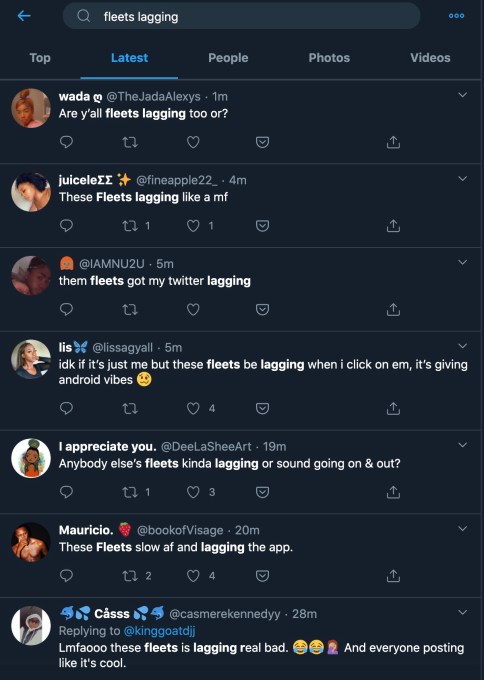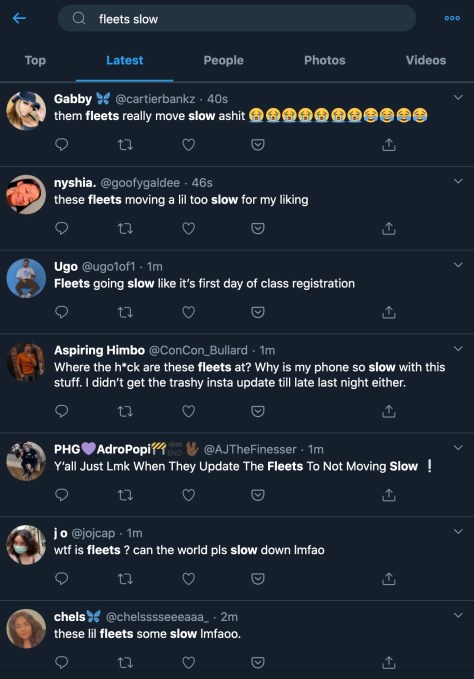Even without a Green New Deal, the sweeping set of climate-related initiatives many Democrats are pushing for, President-elect Joe Biden will have plenty of opportunities to move ahead with much of the ambitious energy transformation plan as part of any infrastructure or stimulus package.
Should Republicans manage to maintain control of the Senate, there are still several opportunities to build climate-friendly policies into the infrastructure and stimulus bills Congress will be pushing through as its first orders of business, according to experts, investors and advisors to the President-elect.
That’s good news for established companies and the wave of startups focused on technologies to reduce greenhouse gas emissions that cause global climate change. And these changes could happen despite intransigence from even moderate Republicans like Mitt Romney on climate issues.
“I think people are saying that conservative principles still account for a majority of public opinion in our country,” Romney said on “Meet the Press” Sunday. “I don’t think they want to sign up for a Green New Deal. I don’t think they want to sign up for getting rid of coal or oil or gas. I don’t think they’re interested in Medicare for All or higher taxes that would slow down the economy.”
Already, current market conditions are forcing some of the largest oil, gas and energy companies to transition to renewables. As those companies begin closing refineries in the U.S., Congress is going to feel increasing pressure to find a way to replace those jobs.
For instance, Shell announced earlier this month in Louisiana that it was closing a factory and laying off roughly 650 workers. The closure is primarily due to declining demand for oil brought about by the COVID-19 pandemic, but both Netherlands-headquartered Shell and its U.K.-based counterpart BP believe fossil fuel consumption may have reached its peak in 2019 and is headed for long-term decline.
U.S. oil and gas giants aren’t immune from the economic impacts of COVID-19 and a global shift away from fossil fuels either. Two of the largest companies, Chevron and ExxonMobil, have seen their share prices decline over the past year as the oil industry reckons with steep reductions in demand and other market pressures.
Meanwhile, some of the nation’s largest utilities are working to phase out fossil fuel-based power generation.
The markets are already supporting the transition to renewable energy, without much government guidance, at least here in the U.S. So against this backdrop, the question isn’t if the government should be supporting the transition to renewable energy, but how quickly stimulus can be mobilized to save American jobs.
“A lot of the really consequential climate-related stuff that’s going to come out in the [near term] … won’t actually be related to renewables,” an advisor to the President-elect said.
So the questions become: What will economic stimulus look like? How will it be distributed? and how will it be financed?
Economic stimulus, COVID-19 and climate
President-elect Biden has already spelled out the first priorities for his incoming administration. While trying to manage the COVID-19 pandemic that has already killed over 238,000 Americans comes first, dealing with the economic fallout caused by the response to the pandemic will quickly follow.
Climate-friendly initiatives will loom large in that effort, analysts and advisors indicate, and could be a boon to new technology companies — as well as longtime players in the fossil fuels business.
“If we are going to be spending that money, there is an enormous opportunity to make sure that these investments are moving us forward and not recreating problems,” said one advisor to the Biden campaign earlier this year.
To understand how the trillions of dollars that are up for grabs will be spent, it’s helpful to think in terms of short-, medium- and long-term goals.
In the short term, the focus will be on “shovel-ready” projects that can be spun up as quickly as possible. These would be initiatives like environmental retrofits and building upgrades; repairing and upgrading water systems and electricity grids; providing more manufacturing incentives for electric vehicles; and potentially boosting money for environmental remediation and reclamation projects.
In all, that spending could total $750 billion by some estimates and would be used to get Americans back to work with a focus on industrial and manufacturing jobs that could have long-term benefits for the national economy — especially if that spending targets the government-designated Opportunity Zones carved out around the country to help low-income rural and urban communities.
If these efforts incorporate Opportunity Zones, there’s a chance to deploy the cash even faster. And if there are ways to preferentially rank infrastructure projects that also include a tech component, then that’s even better for startups who have managed to overcome hurdles associated with technology risk.
“Any time you craft policy, especially federal policy, you have to be so careful that the incentives line up correctly with what you’re trying to achieve,” said a Biden advisor.
Medium- and longer-term goals will likely require more time to plan and develop, because they’re relying on newer technologies in some cases, or they will have to wind their way through the planning process at the local and state levels before they can receive federal funds to begin construction.
Expect another $60 billion to be spent on these projects to finance development, workforce training and reskilling to prepare a labor force for a different kind of labor market.
Incentives over mandates
One of the biggest risks that Biden administration climate policies face is the potential for legal challenges heard before an increasingly sympathetic conservative judiciary appointed under the Trump administration.
These challenges could force the Biden team to emphasize the financial benefits of adopting business-friendly carrots over regulatory sticks.
“Whenever possible you do want to let the markets figure themselves out,” said the advisor to the President-elect. “You always want to default to incentives rather than mandates.”
Coming off of the news this week that Pfizer has received positive results for its vaccine, there are some models from the current administration’s progress on a COVID-19 vaccine that can be instructive.
While Pfizer wasn’t involved in the Operation Warp Speed program created by the Department of Health and Human Services, the company did cut a $2 billion deal with the government that guaranteed a market for its vaccines.
The type of public-private partnerships that Connecticut Senator Chris Murphy mentions could also be employed in the climate space — especially in areas that will be hardest hit by the transition away from coal.
Some of that spending guarantee could come in the form of environmental remediation for orphaned natural gas wells or coal mining operations — especially in regions of the country like the Dakotas, Montana, West Virginia and Wyoming, that would be hardest hit by a transition away from fossil fuels. Some could come from the development of new geothermal engineering projects that require the same kind of skills that engineering firms and oil companies have developed over the past decades.
And, there’s the looming promise of a hydrogen-based economy, which could take advantage of some of the existing oil-and-gas infrastructure and expertise that exists in the country to transition to a cleaner energy future (n.b., that’s not necessarily a clean energy future, but it’s a cleaner one).
Already, nations like Japan are building the groundwork for replacing oil with hydrogen fuels, and these kinds of incentive-based programs and public-private partnerships could be a big boost for startups in a number of industries as well.

Image Credits: Cameron Davidson/Getty Images
Sharing the wealth (rural edition)
Any policies that a Biden administration enacts would have to focus on economic opportunity broadly, and much of the proposed plan from the campaign fulfills that need. One of its key propositions was that it would be “creating good, union, middle-class jobs in communities left behind, righting wrongs in communities that bear the brunt of pollution, and lifting up the best ideas from across our great nation — rural, urban and tribal,” according to the transition website.
An early emphasis on grid and utility infrastructure could create significant opportunities for job creation across America — and be a boost for technology companies.
“Our electric power infrastructure is old, aging and not secure,” said Abe Yokell, co-founder of the energy and climate-focused venture capital firm Congruent Ventures. “From an infrastructure standpoint, transmission distribution really should be upgraded and has been underinvested over the years. And it is in direct alignment with providing renewable energy deployment across the U.S. and the electrification of everything.”
Combining electric infrastructure revitalization with new broadband capabilities and monitoring technologies for power and water would be a massive windfall for companies like Verizon (which owns TechCrunch), and other networking companies. It also provides utilities with a way to adjust their rates (which they appreciate).
Those infrastructure upgrades are also useful in helping utilities find a way to repurpose stranded coal assets that are both costly and — increasingly — useless.
“Coal … it doesn’t make sense to burn coal anymore,” Yokell said. “People are doing it even though it’s out of the money for liability reasons … everyone is looking to retire coal even in the assets.”
If those assets can be decommissioned and repurposed to act as nodes on a distributed energy grid using energy storage to smooth capacity in the same way that those coal plants used to, “it’s a massive win,” according to Yokell. Adoption of energy storage used to be a cost issue, Yokell said. “It’s now a siting issue.”
Repowering old hydroelectric assets with newer, more efficient technologies offer another way to move the needle with shovel-ready projects and is an area where startups could stand to benefit from the push. It’s also a way to bring jobs to rural communities.
The promise of infrastructure spending can be born out across urban and rural areas, but the stimulus benefits don’t end there.
For rural communities there are business opportunities in “climate-smart agriculture, resilience and conservation, including 250,000 jobs plugging abandoned oil and natural gas wells and reclaiming abandoned coal, hardrock and uranium mines,” as the Biden transition team notes. And there’s a huge opportunity for oil industry workers to find jobs in the new and growing tech-enabled geothermal energy industry.
The farm subsidies that have skyrocketed under the Trump administration could continue, just with a more climate-focused bent. Instead of literally giving away the farm to the tune of a projected $46 billion that the Trump administration will hand out to farmers over the course of 2020, payouts could be predicated on “carbon farming.” Wooing the farm vote with the promise of payouts for carbon sequestration could be a way to restart a conversation around a carbon price (a largely failed prospect in government circles). Beyond carbon sequestration, rapid innovations in synthetic biology for biomaterials, coatings and even food could take advantage of the big biofuel fermenters and feedstocks in the Midwest to enable a new biomanufacturing industry.
Furthermore, the expansion of rail lines thanks to the fracking and oil boom means opportunities and the potential to build out other types of manufacturing capacity that can be transported across the U.S.

Volkswagen broke ground Wednesday, November 13, 2019 on an $800 million factory expansion in Tennessee that will be the North American hub of its electric vehicle plans. Image Credits: Volkswagen
Sharing the wealth (urban edition)
The same spending that could juice rural economies can be equally applied in America’s largest cities. Any movement to boost the auto industry through incentives around electric vehicles or federal mandates to upgrade fleets would do wonders for automakers and the original equipment manufacturers that supply them.
Public-private partnerships for urban infrastructure could first receive support from funds devoted to planning and managing upgrades. That could boost the adoption of new tech from startup companies around the country, while creating new jobs for a significant number of workers through implementation.
One large area where urban economic revitalization and climate policies can intersect is in the relatively unsexy area of weatherization, energy efficient appliance installation and building retrofits.
“Local governments across the country are highly interested in the green economy and transitioning to the low-carbon economy,” said Lauren Zullo, the director of environmental impact at the real estate management firm, Jonathan Rose Companies. “Cities are really looking to partner with the private real estate sector because they know we’re going to have to get buildings involved in the green economy. And any work that you do retrofitting local buildings is literally local economy.”
By channeling dollars into green retrofits and the deployment of distributed renewable energy, local economies will get a huge boost — and one that disproportionately will go to helping the communities that have been on the front lines of climate change.
“You saw … a lot of investment made just this way out of the Recovery Act,” Zullo said, referring to the American Recovery and Reinvestment Act of 2009, the stimulus bill passed in the first term of the Obama administration. “A lot of [funds] focused on low-income weatherization that were earmarked for low income and affordable housing. [Those] funds have allowed us to reduce energy consumption anywhere from 30% to 50% … and being able to gain those utility cost savings have been transformational to those communities.”
Why are these programs so important? Zullo explained further, “Low-income folks are disproportionately burdened by utility and energy costs. Any sort of energy-saving opportunities that we can earmark or target in these low-income communities is truly impactful … not just on a carbon footprint, but on the lives and success of these low-income communities.”
Paying for it
For even this more-modest legislation to make it through Congress, a Biden administration will have to answer the questions of who would pay for the stimulus and how it would get distributed.
In a tweet, the political commentator Matthew Yglesias proffered that the country could afford “to throw an ice cream party.” That policy would enable Republicans to keep the tax cuts while allowing the government to continue to spend on stimulus measures.
“[Interest] rates are very low. The country can afford an ice cream option where we spend money on some good things and ‘offset’ with tax cuts,” Yglesias wrote.
To distribute the funds, Congress could set up a body similar to the Reconstruction Finance Corporation (RFC), which was established by Herbert Hoover’s administration back at the start of the Great Depression. It was expanded under Franklin Delano Roosevelt to disburse funds to financial institutions, farms and corporations at risk of collapse.
While the success of the institution itself is somewhat murky, the RFC along with federal deposit insurance and the related Commodity Credit Corporation (which, unlike the RFC, still exists) laid the groundwork for the country to emerge from the Great Depression and gear up manufacturing to engage with a world at war in the 1940s.
The durability of the CCC could provide a model for any infrastructure credit corporation that the government may want to establish.
Some investors support the idea. “It’s more about channeling dollars to state, municipal or private businesses with the ability to underwrite heavily subsidized loans to any entity proposing a modern infrastructure project that could be paid through municipal bonds or tolling,” said one investor in the infrastructure space. “It would offer a credit backstop to anyone who wanted to invest in infrastructure and could have a technological requirement associated with it.”
Several investors suggested that capital from loans paid out through the infrastructure bank could finance the reshoring of industry, with potential tax revenues from the businesses offsetting some of the costs of the loans. Some of these measures could have additional economic benefits if the loans get funneled through local financial institutions as well.
“If you think about a vehicle to deliver these funds, you already have an existing architecture to deliver this … which is the municipal bond market,” said Mark Paris, a managing partner at Urban.us, a venture capital fund focused on urban infrastructure.
The infrastructure answer
There’s no shortage of levers that the Biden administration can pull to reverse the course of the Trump administration’s policies on climate change, but many of these federal policy changes are likely to face challenges in courts.
Vox’s David Roberts has an excellent run down of some of the direct actions that Biden can take along the path toward decarbonization of the U.S. economy. They include restoring the over 125 climate and environmental regulations that the Trump presidency reversed or rolled back; working with the Environmental Protection Agency to develop a new, more sweeping version of the original Obama-era Clean Power Plan; push the Department of Transportation’s development of new fuel economy standards; and supporting California’s own, very aggressive vehicle standards.
Biden can also encourage financial markets to make more of an effort to price climate risk into their financial models for investment, which would further encourage investment in climate-friendly businesses and a divestment from fossil fuels, as Roberts notes.
Some of America’s largest financial services institutions are already doing just that, and oil-and-gas companies are wrestling with the need to transition to renewable or emission-free fuels as their share prices take a pummeling and demand plummets on the back of the COVID-19 pandemic.
As Mother Jones suggested last year, a Biden administration could declare climate change a national security emergency, in the same way that the Trump administration declared immigration to be a national security emergency. That would give Biden extensive powers to reshape the economy and directly influence industrial policy.
Declaring a national climate emergency would give Biden the powers he needs to enact much of the infrastructure initiatives that comprise the President-elect’s energy plan, but not a popular mandate to support it.
Before taking that step, Biden may choose to try and exhaust all legislative options first. In a divided Congress that means focusing on infrastructure, jobs and industry incentives.
“The impacts of climate change don’t pick and choose. That’s because it’s not a partisan phenomenon. It’s science. And our response should be the same. Grounded in science. Acting together. All of us,” Biden said in a September speech.
“These are concrete, actionable policies that create jobs, mitigate climate change and put our nation on the road to net-zero emissions by no later than 2050,” he said. “We can invest in our infrastructure to make it stronger and more resilient, while at the same time tackling the root causes of climate change.”









 (@mattyglesias)
(@mattyglesias) 
